Overview of artillery. Part of 4. Rockets: from square firing to precision strike
The Chinese company Aerospace Long March International offers a series of 301-mm missiles with a range from 100 to 290 km
MLRS MLRS M270 US Army
In the West, the Multiple Launch Rocket System (MLRS) Multiple Launch Rocket System (MLRS) from the company Lockheed Martins has been in service for many years and is not even discussed since the United States extended its service life to 2050. The main and largest operator remains the US Army, many countries have also adopted it, for example, France, Germany, Greece, Italy, the Netherlands, Norway, Turkey and the United Kingdom. The Netherlands and Norway have removed their systems from service, but Denmark has sold its launchers to Finland. Israel, Egypt, Saudi Arabia, Bahrain, South Korea and Japan are also operators of this jet system. As for the lightweight version of Himars (High Mobility Artillery Rocket System - highly mobile jet salvo system), it is in service with the army and the US Marine Corps, the armies of Jordan, the United Arab Emirates and Singapore. The increased sensitivity of combat elements (submunitions) has led many countries to get rid of their M26 missiles, each of which contains 644 advanced conventional dual-purpose MX submunitions M77 DPICM, as well as M26A1 and M26A2 missiles in favor of unitary warheads. In addition, the need to reduce indirect losses made it necessary to change the direction of new purchases in favor of the GMLRS - a controlled version of the 227-mm missile with inertial guidance, supplemented by GPS guidance, which provides a circular probable (CWE) deviation of 10 meters. The original M30 GMLRS warhead remained cassette-based and was based on combat elements, but the next unitary version of the M31 GMLRS-Unitary was widely used in firing MLRS / HIMARS launchers of the British and US armies (the latest available October 2013 report of the year refers to more than 3000 such missiles fired during expedition operations). Almost all American GMLRS-U missiles were released in urban counter-terrorism scenarios. Lockheed Martin produced more than GMLRS 25000 rockets; In April 2015, the missiles of the ninth installment were shipped from the company's Arkansas plant to the US Army, Marine Corps and the Italian Army. Italy, Germany and France have upgraded their M270 installations to the European standard, which includes a European fire control system compatible with GMLRS-U. European modernization followed the American 2002 initiative of the year, which pursued similar goals. The launcher itself was modernized and the new fire control system (LMS) was integrated; modified launchers received the designation M270A1. The following 2012 contract of the year provided for the installation of a new armored cabin and software update for the SLA, deliveries of the refined systems began in the 2015 year. The British army likewise modernized its MLRS.
Although the United States has not signed the Convention on Cluster Munitions, the combat use of cluster warheads has been suspended since 2003. However, the use of unitary warheads to block enemy access to specified areas required a significantly larger number of missiles, which increased the cost and time of operations. In this connection, the GMLRS missile program with an alternative warhead was launched. Three competing prototypes were tested in the 2010 year, with the result that ATK was named the winner. Test flights of the new rocket were conducted in 2013 year.
The British army is armed with GMLRS missiles. Launch of the GMLRS from the MLRS installation during deployment in Afghanistan in the Helmand Valley
Launch 227-mm missiles from a HIMARS unit. This system was designed to provide highly mobile units with the same fire power as armored forces armed with MLRS systems.
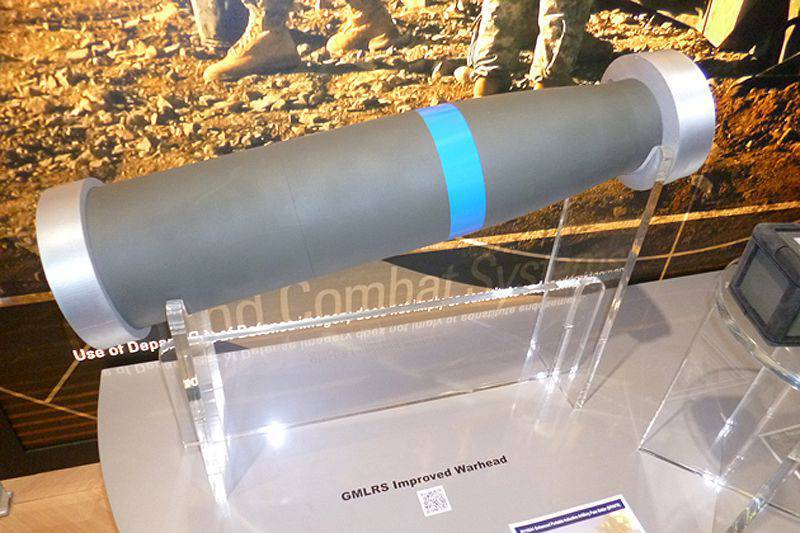
For the alternative warhead GMLRS, ATK uses its LEO technology; production contract coming soon
ATK’s approach was to preserve the unitary warhead with a significant increase in its lethal radius. To achieve this, she developed the Lethality Enhanced Ordnance (LEO) technology, based on tungsten balls of different diameters mixed in an appropriate proportion to inflict maximum damage. The new warhead must correspond to the lethality of previous warheads with combat elements and must be equipped with a fuse with two different height settings and a point detonation mode, although no accurate information is available on this technology, however as with the lethality. Another goal of this development was to reduce the risk of an uncontrollable reaction of a warhead when a bullet or shrapnel hit it. The new warhead is currently qualified and in the summer of 2015, Lockheed Martin and ATK were awaiting a contract for its production. The US Army should leave in service only a new missile with an alternative warhead, and stop the production of the current unitary warhead.
The State of Israel is undoubtedly the target for all sorts of missiles. From 2001 of the year to the end of 2014, more than 25000 missiles were fired across this country. Being under fire does not mean that the Israeli defense industry is not active in this area. Here, above all, stands out the company Israel Military Industries, which has gradually expanded its portfolio, especially in terms of ammunition with increased accuracy and increased range.
IMI has developed a Lynx multiple rocket launcher system that can fire five types of missiles. As a rule, this MLRS is installed on the chassis of the 6x6 truck, it is completely autonomous, as it is equipped with a modern inertial navigation system (INS), the OMS and the onboard information management system. Placing the missiles in two launch containers ensures their high availability during operation, the system can be reloaded in less than 10 minutes and again take up a firing position. The simplest missile is the standard 122-mm unguided Grad missile capable of delivering a 20 kg warhead to the 20 / 40 km range (each container contains 20 missiles). IMI later developed an 160-mm unguided LAR missile capable of delivering a 45 kg warhead to a range of 45 km (in a container for 13 missiles). In order to improve accuracy, IMI developed the following version, designated Accular (Accurate LAR). Its increased range, accuracy and cheapness were to challenge the cost of guided 155-mm artillery shells. The Accular missile has a warhead with a mass of 35 kg and a range of 40 km, its guidance system is based on GPS. Officially, the maximum QUO is 10 meters, but the IMI company claims an actual two or three meters. The rocket was adopted by the Israeli army, as well as an unnamed overseas buyer. Each MLRS Lynx launch canister can accept Accular 10 missiles.
In order for the ground forces to be independent of the air forces regarding long-range strikes, IMI developed an Extra (Extended Range Artillery) rocket with a diameter of 306 mm with a 120 kg warhead and an 150 km radius. Guidance is based on the INS / GPS system, while the rocket is controlled using the bows, which guarantees the QUO 10 meters. Each Lynx can hold four Extra missiles. These missiles were delivered to two unnamed overseas buyers, the number of missiles with a high-explosive fragmentation warhead alone exceeded the 500 mark. Israel is also armed with Extra, albeit in a classified version. This missile can also be equipped with combat elements (the same is true for most of the above-mentioned ammunition), but Israel has stopped using cluster bombs. However, for the Israeli army, IMI is developing a very advanced cluster munition, which doesn’t have combat elements that have fired, will have much less 1%, tests have shown the real number of 0,02%. Each of them weighs 1,2 kg and is equipped with a self-destruct mechanism of three types. These munitions will be deployed along with rockets and 155-mm artillery shells.
The fifth ammunition for Lynx (it is believed that LAR and Accular belong to the same category) is the Delilah-GL guided missile. She represents aviation Delilah guided missile in the version of ground launch. The diameter of the rocket is 330 mm and therefore the Lynx installation can only accept two containers, one rocket in each. The accuracy of a missile with a warhead weighing 30 kg and a range of 180 km is less than one meter thanks to its inertial navigation system with GPS and an advanced optical-electronic homing head. The ground launch option is distinguished by a launch rocket engine, which accelerates Delilah to a speed at which the main engine is already turning on. Thanks to the human concept in the control loop, real-time video is displayed on the operator’s display. Delilah-GL can barrage over the target area for some time, allowing its operator to positively identify the target or direct it to a more important one. The attack, as a rule, is carried out from a dive, at this moment the rocket reaches a speed of Mach 0,85, which, when meeting with a target, adds an explosion of kinetic energy.
The MLRS launcher of the Italian army from the 5 artillery regiment. Like many other countries, Italy is upgrading its MLRS for compatibility with the GMLRS rocket.
Let us turn to what may soon be added to the portfolio of the company IMI. At the beginning of 2014, under pressure from two customers searching for a missile with a range of 250 km, IMI began work on an unguided long-range missile, named Predator Hawk; its development should be completed in the middle of the 2016 year. The new missile weighs 800 kg, has a diameter of 370 mm and carries a unitary warhead weighing 200 kg. Her guidance is based on an inertial navigation system with GPS / Glonass, guaranteeing (according to IMI data) the QUO 10 meters. The combat unit and guidance system are taken from the Extra rocket. The company is seeking to adapt the Predator Hawk rocket for other tasks, for example, for the defense of the coast and islands. Its cost is reduced due to the fact that there is no homing head, since the guidance is provided by two Elta radars, which triangulate the target, while the one-way communication channel provides the missile with an update of the target data before meeting it. Thus, sea targets can be neutralized at a significantly lower price compared to traditional surface-to-surface missiles. IMI is close to signing a contract for a similar system with one of the countries in Asia, while the second buyer from this region is waiting for its turn. The company is currently thinking about using this principle against moving ground targets.
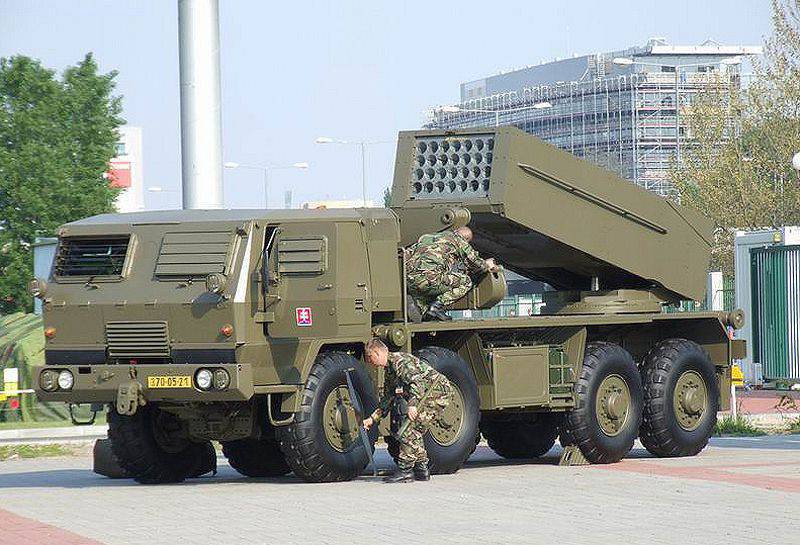
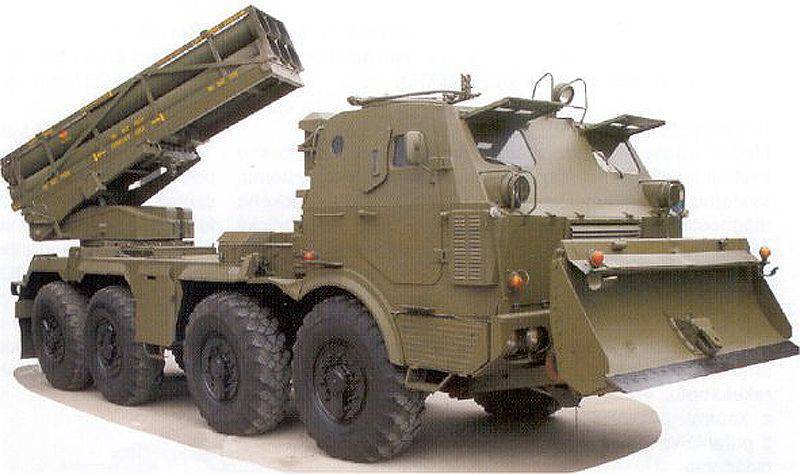
The Slovak company Konstrukta Defense has developed a modernized MLRS RM-70 / 85M, equipped with a new SLA and navigation system. The modular version of the system can also launch 227-mm missiles.
With regard to the work on the improvement of the MLRS, the Israeli company IMI has developed a system for correcting the trajectory TCS (Trajectory Correction System), which is a guidance rocket engine mounted in front of the rocket between the warhead and nose fairing. The system is activated from the ground control station, which is located in the command center of the division, and can simultaneously control up to 24 missiles. Rocket rudder control is performed on the middle part of the trajectory and this allows to significantly reduce the rocket QUO The automatic, all-weather TCS system does not depend on GPS signals, does not require human participation in the control loop. It has been in service with the Israeli army since the beginning of the 2000. IMI manufactures these systems and integrates them into missiles purchased from Lockheed Martin. To date, there are no foreign customers for this system.
Turkish Roketsan is one of the most active companies in the field of rocket production. Its products range from 107-mm missiles and launchers (typical caliber Chinese missiles), 122-mm typical for the Soviet era, and 300-mm systems. Let's start with rockets. The TR-107 rocket with a range of 3-11 + km has a launch mass of 19,5 kg and a high-explosive fragmentation warhead with a mass of 8,4 kg, its effective radius of destruction is 14 meters. Two types of 122-mm missiles are produced: TR-122 with a range of 16-36 km (21-40 km when launched at an altitude of 600 meters) and a mass of 65,9 kg, 18,4 kg of which are high-explosive warheads with a radius of destruction of 20 meters. Both missiles have percussion fuses. TRB-122 has the same physical characteristics, but it has a high-explosive fragmentation warhead with 5000 steel balls and a remote fuse, which increases the lethality to 40 meters. The larger TR-300 rocket, which comes in two versions, the TR-300E with the 65-100 + km range and the TR-300S with the 40-60 km radius does not differ in principle. Both missiles weigh 590 kg and have the same high-explosive fragmentation warhead with steel balls weighing 150 kg, the radius of destruction is 70 meters.
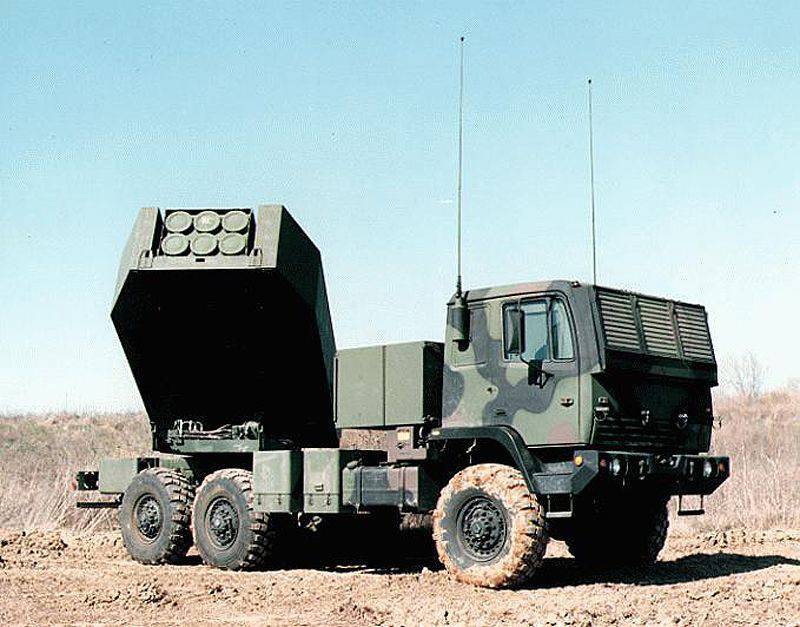
MLRS Himars. Unlike heavy MLRS MLRS, this lighter system can accept not two, but only one launch container
The Turkish company Roketsan is developing controlled versions of its 122 and 300 mm caliber missiles, which can be launched by the same-company multi-caliber launcher T-122 / 300
In order to offer maximum functional flexibility to its customers, Roketsan has developed a series of modular systems in which more than one type of missile can be used simultaneously. The TR-107 launcher is the easiest in the company's product line. A launch container with 12 tubular guides mounted on a trailer is well suited for arming airborne and airborne forces; it has steel launch tubes and can thus be recharged. The entire trailer without missiles weighs 385 kg. The launcher T-107SPM is equipped with a container with tubular guides in the configuration 2x12. Its 107-mm launch canisters are also available with disposable, insulated, and composite guides. Compared to the original Chinese 107-mm missiles with a radius of 8 km, Roketsan missiles fly almost 50% further, to 11 km. For 122-mm missiles, Roketsan offers a T-122 launcher that can accept two 20 steel guides in each (four rows of five tubes) or two heat-insulated composite containers each also with 20 guides. Compared to the original Russian missiles with a range of 20 km, missiles of this type have an 40 km range. The launcher can be rotated by ± 110 ° angles, the vertical angles are 0c / 55 °. The system is installed on the truck chassis 6x6 or 8x8, equipped with a crane with a lifting capacity of 15 tons for changing the container and a hydraulic stabilization system with four supports. To reduce preparation time for launch, the installation is equipped with an INS / GPS navigation system (inertial / GPS signals), an automatic guidance system, a weapon control system and a voice and digital data transmission system. It takes less than five minutes to launch the first rocket, the minimum interval between launches is half a second. The total mass of the system is about 23 tons. At the request of the customer, the calculation of the installation receives ballistic protection. A smaller chassis, such as the 4x4, can have a T-107 / 122 launcher; it can accept three disposable 107-mm containers in a row or one disposable 122-mm container, installed longitudinally, since 122-mm rockets are three meters long. It should be noted that the launch of 107-mm missiles can also be carried out at a negative angle, which allows direct fire from high ground. Another two-caliber T-122 / 300 launcher can accept two disposable containers with 20 122-mm rockets or two twin-tube containers with 300-mm rockets. All multi-caliber installations automatically detect and identify the type of the loaded container with the rockets.
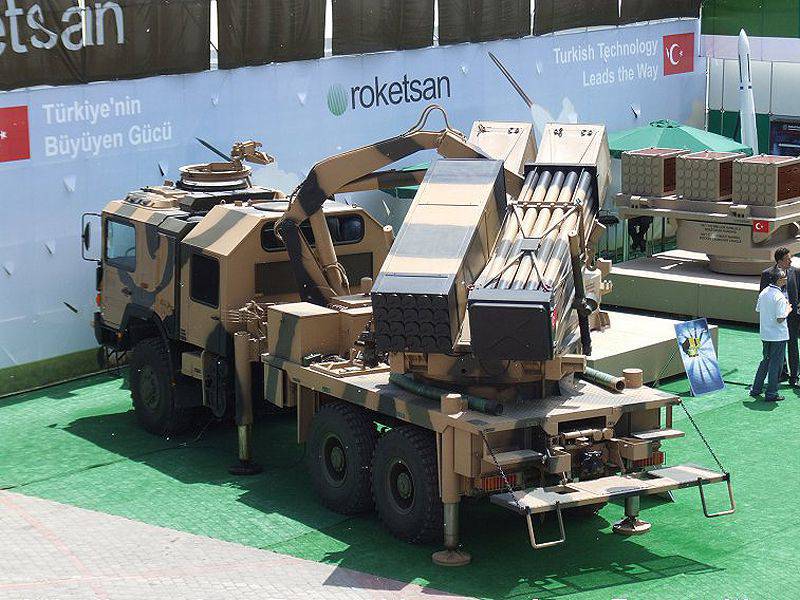
When loading 12-mm missiles, the Roketsan T-l22 / 300 launcher can accept 40 missiles in two 20-tube containers
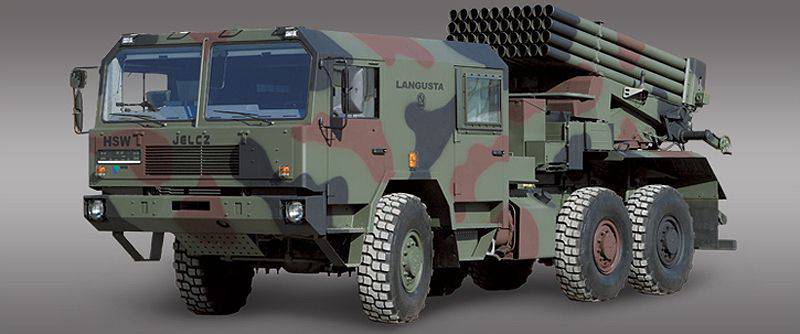
The Polish company Huta Stalowa Wola developed 122-mm long-range missiles and two launchers. The Langusta 40 is based on the chassis of the 6x6 truck, and the second, Langusta II, is based on the 8xXNNXX chassis
To expand its product range, Roketsan is developing managed versions of 122-mm and 300-mm missiles. Various options will be available, either with INS / GPS guidance, or with semi-active laser guidance. According to the company, compared to the unmanaged versions, the range of these models will be increased by 20%.
MLRS Behemoth was developed by Emirates company Jobaria Defense Systems in collaboration with Turkish Roketsan. It consists of four rotary launch platforms, each with three containers of 20 122-mm missiles, which in total gives the total number of 240 missiles
At IDEX 2013, Jobaria Defense Systems (a joint venture between Tawazun and Al Jabed Land Systems, both from the United Arab Emirates) showed their Behemoth MLRS (in fact, Hippo!). The machine is huge in size specially designed to work in the desert. The system is based on a heavy tug Oshkosh 6x6 HET, pulling a five-axle trailer behind which are installed four launchers. This monster has a width of 4 meters, a height of 3,8 meters and a length of 29 meters! All four launchers are rotated 360 °, in each of them are placed three containers with 20 guides with 122-mm missiles, that is, 240 missiles can be charged directly to this MLRS. The behemoth is equipped with a GPS / INS navigation system, meteorological sensors and a communication system for transmitting data and voice messages to an artillery control point. A commander can program a firing task depending on the targets and the necessary impact on them; the system is capable of launching all 240 missiles at a single target with separate volleys or firing several targets with a certain number of missiles; the effective range of the system ranges from 16 to km 40. The high-explosive fragmentation type missiles are supplied by the Turkish company Roketsan, their warhead with steel balls has a remote fuse. According to available data, the Hippopotamus is in service with the UAE army, although the number of systems purchased is not disclosed.
The Polish company Huta Stalowa Wola has been producing MLRS for 122-mm missiles for several years. In its current catalog there are two such systems, both with the same artillery unit. A launcher can take forty 122-mm unguided missiles that are fired at a volley within 20 seconds; high-explosive fragmentation rockets have a range of 42 km, whereas cluster missiles have a 32 km. The maximum angle of vertical guidance is 50 °, the minimum 0 °, which, when firing ahead, becomes 11 ° (due to the cabin). The horizontal angles are from the centerline to the right 70 ° and to the left 102 °. The fire control system consists of the WB Electronics DD9620T terminal, the Honeywell Talin 5000 navigation system and the Radmor RRC-9311 AP radio station capable of transmitting voice, digital, packet IP data in a secure mode. When installed on a Jelcz P662D.35-M27 6x6 truck chassis, the system is called Langusta WR-40, while when installed on a Jelcz P882D.43 8XXNNXX truck, it becomes Langusta II. The second chassis allows you to take on one set of 8 missiles, which can be automatically reloaded into the launcher; Naturally this MLRS has great fire power. Langusta WR-40 is designed to replace outdated MLRS BM-40. Although Poland is striving to move to NATO standards with all its forces, the reason for the preservation of the 21 mm caliber missiles and the corresponding MLRS, which represent standards of the Cold War era, is associated with the very strong production base of such weapons in this country. The Polish army also wants to be armed with new systems compatible with missile units for the MLRS. They must be based on the new Jelcz 122 663.32x6 truck, which is also used for wheel 155-mm Kryl howitzer production of the same company. HSW should be the lead contractor here, and Lockheed Martin signed an agreement with the Polish company Mesko for the development of unguided and guided missiles at MSPO 2013. The system will have the designation WR-300 Homar, the 300 number indicates the maximum range achieved when firing an ATACMS missile (Army Tactical Missile System), whose container is compatible with a container with six 227-mm missiles. MLRS Honiar should be ready in 2017 year.
The reloading of the RM-70 system (based on the MLRS BM-21 with 122-mm missiles) does not take long due to the spare ammunition located behind the 8x8 chassis cab
The Czech company Excalibur Army still has in its catalog the RM-70 system. It is in service with the Czech Army (formerly Czechoslovak) from 1972. The system is based on a BM-21 launcher with 40 122-mm missiles installed on an adapted version of the Tatra T813 "Kolos" 8X8 Tatra truck, which also carries an 40 rocket launcher and an installation for automatic loading of the launcher.
Following current trends, the Serbian company Yugimport has developed a modular self-propelled rocket launcher Morava, which is based on a rotating platform with a launcher capable of receiving two disposable modules for 12 missiles each. The launcher can accept different types of missiles: caliber 107 mm, 122 mm and 128 mm. Among them, an 107-mm extended range M06 rocket capable of delivering a fragmentation warhead of 1,25 kg to a range of 11,5 km, an 122-mm Grad missile with a 19,1 kg warhead of 20,1 km, advanced versions with the same warhead with a range of 27,8 km (Grad-KM), and an improved version with the same warhead with a range of 40 km (Grad-KM), respectively, and 2000 km of 128 km (Grad-KM) ) and 77 km (Grad-19,5), 21,5-mm M3,3 Oganj rocket with 12,6 warheads per 60 km and Plamen-D short-range rocket with 30 kg warheads and 4 km range. The launcher is fully automated, it is integrated into the OMS and INS / GPS, meteorological sensors and automatic platform leveling system, which reduces the launch time of the first rocket to less than 4 seconds; after the launch of the last rocket, the system is ready to leave the position in XNUMX seconds. The use of rocket modules allows for easier reloading, and a truck to transport rockets with a light crane is sufficient for quick replacement of used modules. Modular rocket launcher Morava from the company Yugimport can be easily installed on the chassis of the truck XNUMXxXNUMX.
The Russian company Rosoboronexport offers the latest modifications based on the family of Tornado 300-mm systems, which, depending on the model and warhead, have a maximum range of 70 or 90 km. For these MLRSs, various warheads are available: cluster, cluster to fight anti-tank mines, high-explosive fragmentation, thermobaric, high-explosive armor-piercing, fragmentation-cumulative and with submunitions with remote fuses. The BM 9A52-2 launcher with 12 tubes can launch all 40 missiles in 40 seconds, the first missile is launched three minutes after stopping, thanks to fully automated navigation systems, fire control and launch tube launching. The calculation works with the BM 9A52-2 launcher from a protected cabin, the system is rather heavy, its combat weight is more than 43 tons. A lighter BM 9A52-4 launcher with six tubular guides was also developed. It has the same ballistic characteristics, while its combat weight is reduced to about 24 tons.
Indonesian MRLS Astros. The Brazilian company Avibras is currently working for the Brazilian army on the Astros 2020 program, which includes the development of new systems and upgrades
Norinco's AR3 MLRS can be charged with 300-mm or 370-mm missiles that can hit targets at a distance of 280 km
In its various forms, the MLRS Smerch was exported to many countries, such as Algeria, Azerbaijan, Belarus, India, Kazakhstan, Kuwait, Syria, Turkmenistan, Ukraine, the United Arab Emirates and Venezuela. In addition, Russia still offers its 122-mm Grad missile system in its basic configuration with 40 guides.
The Brazilian company Avibras developed in the 80-ies MLRS Astros (Artillery Saturation Rocket System - MLRS only in other words) and since then has been constantly refining this system. The current standard version is Astros II Mk6. Compared to the Mk3 version in service with the Brazilian army, the new version has a new cabin with additional reservations, new digital navigation and communications equipment, while the Contraves Fieldguard radar has been replaced with a new target tracking radar. The rocket launcher and system components are installed on the chassis of off-road trucks Tatra T815-790R39 6x6 and T815-7A0R59 4X4; The original version of the Mk3 is based on the chassis of the Mercedes Benz 2028A 6x6. Brazil has already acquired the first batch of nine Mk6 systems, the first one delivered in June 2014 of the year. The next planned contract provides for the purchase of another 51 system. Meanwhile, Brazil is upgrading its MLRS Mk3 to the Mk3M standard, which includes most of the upgrades adopted for the Mk6, with the exception of the new chassis. From the very beginning, the Astros MLRS was conceived as a multi-caliber system; it can accept a launch container with a different number of rockets depending on caliber: SS-32 30 mm 127 mm 16 SS-40 / 180 4 mm missiles, they have 60, 80, 300 and 33 km respectively. In order to increase accuracy and increase the range of the Astros 40 program, it is planned to develop a controlled version of the 60-mm rocket under the designation SS-90G. New and upgraded MLRSs also allow launches of the tactical cruise missile AV-TM 2020, the launcher can receive two such missiles.
MLRS Astros II is in service with six more countries, Angola, Bahrain, Malaysia, Iraq, Qatar and Saudi Arabia. The last buyer of this system Indonesia bought 36 systems. It is not yet known how much the financial crisis affecting Avibras will affect the future of the Astros system.
The South Korean army is currently receiving the first batch of Chun-Mu MLRS. The system is based on the Doosan 8x8 truck chassis. This company also manufactures pivot bearing and launcher and acts as the lead contractor. Missiles to this system are designed and manufactured by Hanwa. On the launcher placed two containers of six 239-mm missiles in each. They can either be unmanaged or managed. Although various types of warheads are available for this MLRS, only high-explosive fragmentation warheads are offered for export (cluster warheads are also available for the domestic market; South Korea has not signed the Prohibition Convention weapons of this type). The range of the system is not disclosed, but is estimated at about 80 km.
Norinco's latest developments include Dragon guided missiles of various calibers.
China is definitely not suffering from the absence of manufacturers of the MLRS. At least three companies are active in this area: North Industries Corporation (Norinco), China Precision Machinery Import Export Corporation (CPMIEC) and Aerospace Long-March International (ALIT). They all have in their portfolio development launchers and missiles to them.
Let's start with the company Norinco. The most common Type 90B system is a 122-mm launcher installed on the North-Benz 2629 6x6 chassis, which houses a turntable with 40 tubular rails, as well as a reloading kit. The entire system is quickly masked by the camouflage net that comes with the kit. The most advanced 122 mm caliber missiles have an 50 km range, however, Norinco plans to add an INS / GPS guidance system to these missiles. The WM-120 installation with a 120 km range is significantly larger and can accept two containers of four 273-mm missiles each. WM-120 is a further development of the previous WM-80 system, also based on the TA-580 8xXNNXX off-road truck chassis. An export order from Armenia was received for this system at the end of the 8s. The MLRS can launch missiles with high-explosive, high-explosive, incendiary or cluster warheads to a range of 90 km, although new guided missiles add to its radius another 80 km. RSZO AR40A 1x8 carries two containers of five 8-mm rockets each (the same caliber of the Soviet-Russian Smerch systems). But this system can also take on board two containers of four 300-mm rockets. Three types of 370-mm missiles are available, BRE300 (2 kg high-explosive fragmentation warhead, lethal radius 190 meters, range from 100 to 60 km), cassette BRCXNNX (130 submunitions capable of penetrating steel armor with thickness XNXXXXXXXXXXXXXXXXXXXXXXXXXXXXXXXXXXXXXXXXXXX) capable of penetrating steel armor ) and BRC3 (submarine 623 and range from 50 to km 20). MLRS AR70A is a further development of the AR4 system, on which two containers of four 480-mm rockets were installed. Its export version of A60 was sold to at least one country, Morocco. Later, the AR130 variant was developed, which can carry two containers of five 1-mm missiles or two containers of four 1-mm missiles. The 300 mm Fire Dragon 2 guided missile can fly 3 km away, its guidance system is based on an inertial system connected to a satellite positioning system (it can be GPS, Glonass or Chinese Beidou), which allows you to reach the 300 CVO meters. The 370 caliber Fire Dragon 280 rocket is equipped with the same guidance system and has an 370 km range. Norinco also developed the SR-280 modular MLRS, which can launch missiles of the 30 caliber mm or 140 mm. It can accept one container with 300 130-mm rockets or one with six 5-mm rockets. These missiles were designated Fire Dragon 122 and have a range of 220 km. They have the same guidance system as other Fire Dragon missiles, only the guidance function on the final part of the trajectory using a semi-active laser is added, which guarantees meter accuracy.
The WeiShi (Sentinel) missile family was developed by the Chinese company Alit in unguided, guided (simple inertial guidance) and high-precision (guidance INS / satellite signal) variants. The 122-mm WS-15, 300-mm WS-1 and WS-1B unguided rockets have a range of 45, 100 and 180 km respectively. The WS-1B carries an 150-kg high-explosive fragmentation warhead at maximum speed 5,2 Mach number, having a range dispersion from 1 to 1,25%; A cassette version is also available. The WS-22 model is a controlled version of the WS-15 rocket with the same range, while the WS-2 is a 400-mm controlled rocket with a range of 200 km. As for high-precision missiles, the WS-32 rocket is a controlled version of the WS-1 with a range of 150 km, and the WS-33 is an 200-mm rocket with a range of 70 km. The WS-3 is a high-precision version of the WS-2 rocket, and its upgraded version of the WS-3A has a long range that reaches 280 km. Alit also developed the A series of 301-mm rockets, in which the A100 rocket is guided and the A200 and A300 rocket are high-precision. The numbers in their designations presumably indicate their range, although the latter barely falls short of 290 km.
CPMIEC's M12 MLRS carries two 600 kg 2070 guided missiles that have high-explosive or high-explosive cluster 450 kg warheads. Vertical launch missiles have a range of 50 to 150 km with the KVO 80-120 meters with an inertial system and the KVO 30-50 meters with inertial-satellite guidance. To launch the first rocket, you need 18 minutes, the second one starts in 3-5 minutes. The two other launchers of CPMIEC are armed with guided missiles SY400 and SY300, which, with an inertial guidance system, have a KVO 250 meter and with an inertial satellite system, a QVO 50 meter. The length of the 400-mm SY400 rocket is 4,8 meters. The launch weight of the 1175 kg rocket, which includes the 200 kg warhead; It can be high-explosive, volumetric explosion or cassette. The smaller SY300 rocket has a diameter of 300 mm, a length of 6,518 meter and a mass of 745 kg, including an 150 kg warhead that can be high-explosive, volumetric explosion, high-explosive incendiary or a cassette with armor-piercing submunitions. Depending on the warhead, it has a range from 40 to 130 km. Both missiles SY400 and SY300 vertical launch. Chinese MLRS and rockets have received many export orders, they can be found in Armenia, Bangladesh, Pakistan, Sudan, Tanzania, Thailand, Turkey and Venezuela.
MLRS SR. This rocket launcher, developed by Norinco, a Chinese company, can accept 122-mm and 220-mm missiles in unguided and guided versions.
Superlight Systems
Croatian company Agencija Alan offers its system Heron M93A2, which is a launcher of 70-mm missiles with two containers of 20 missiles each. The system is installed on the trailer; after stopping, the first rocket is launched in five minutes; vertical pointing angles are -1 ° / + 46 °, horizontal ± 15 °, circular rotation on 360 ° is available as an option. The MLRS is armed with TF M95 missiles with a 3,7 kg warhead and a maximum range of 10 km. With a combat weight of less than 1,3 tons, the system can also be installed on a passenger car.
Hanwha, a South Korean company, also developed the 70-mm system. The launcher mounted on the vehicle has guides for 34 missiles. These missiles are available with three types of warheads: high-explosive fragmentation mass 1 kg with a shock fuse, universal with nine submunitions and an electronic remote fuse and, finally, with 1200 3,9-gram ready-arrow-striking elements and an electronic remote fuse. The system, equipped with automated fire control, navigation and guidance systems, can launch four missiles per second in direct and indirect range guidance to 8 km (universal), 7,8 km (high-explosive fragmentation) and 6 km (with arrow-shaped striking elements) . The launcher rotates at 360 °, the vertical guidance angles are 0 ° / 55 °, the weight of the 4,9 system is tons, so it can be mounted on light and medium weight machines.
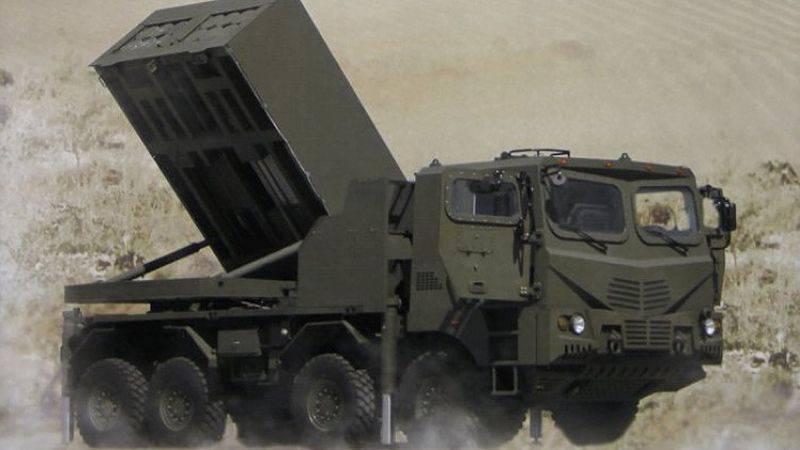
The South Korean MLRS Chun-Mu is based on a Hanwa 239-mm missile developed by high-explosive or cluster warheads.
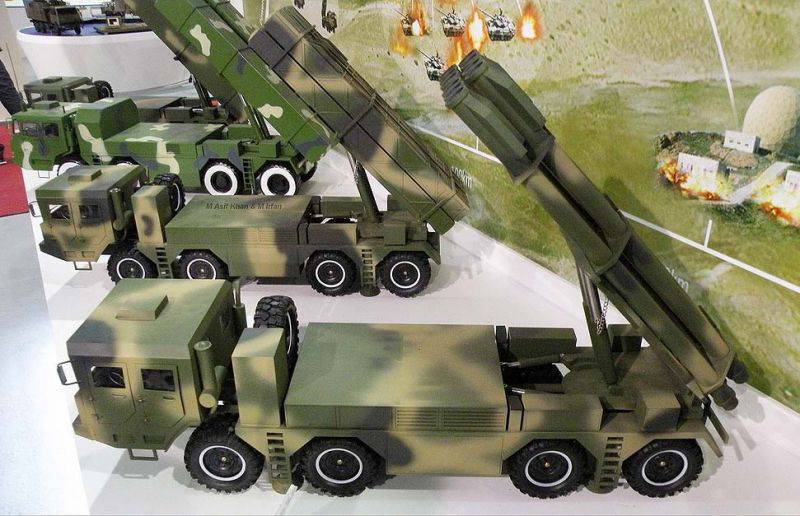
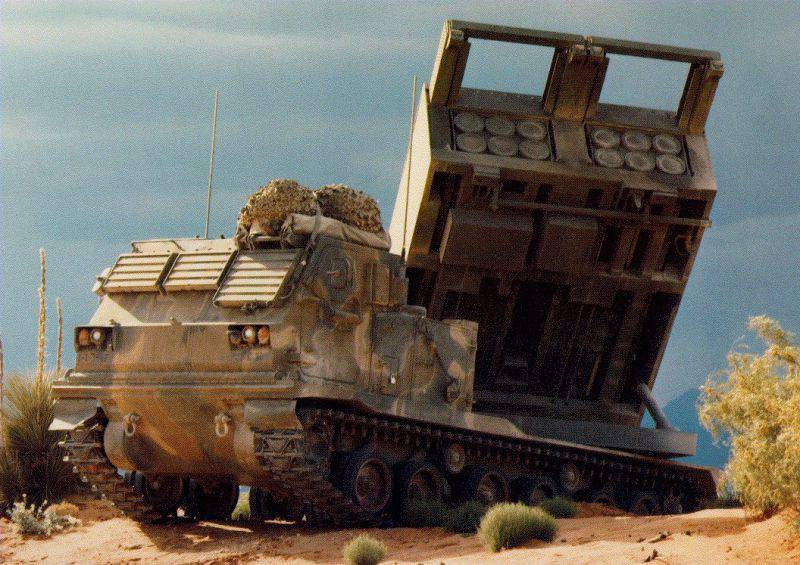
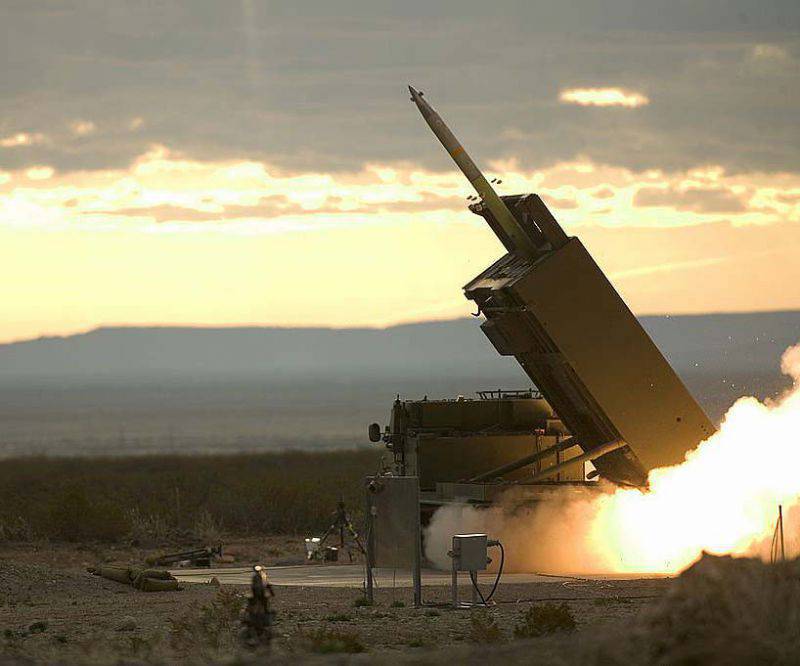
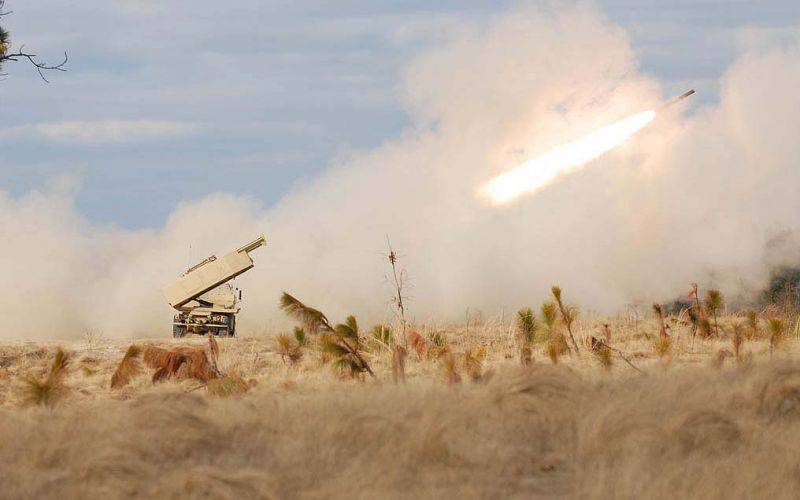
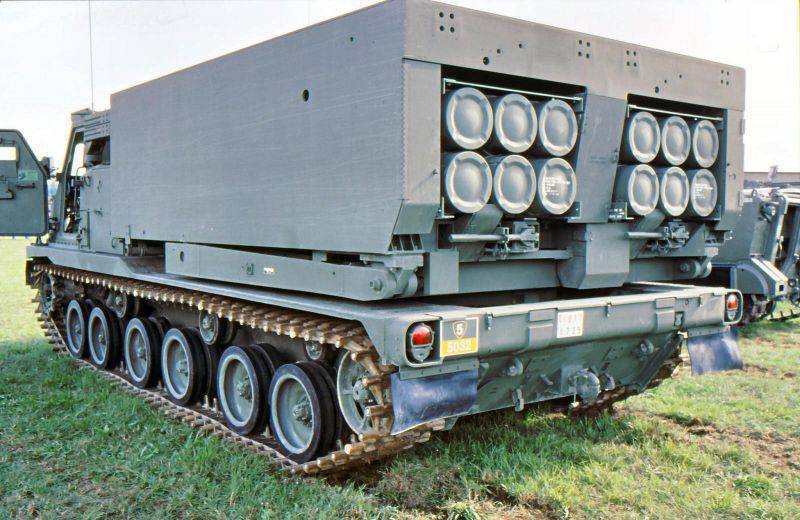
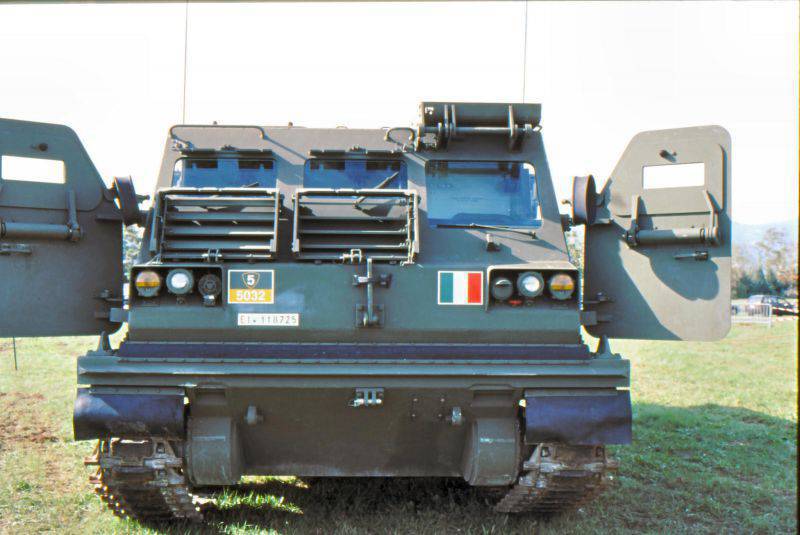
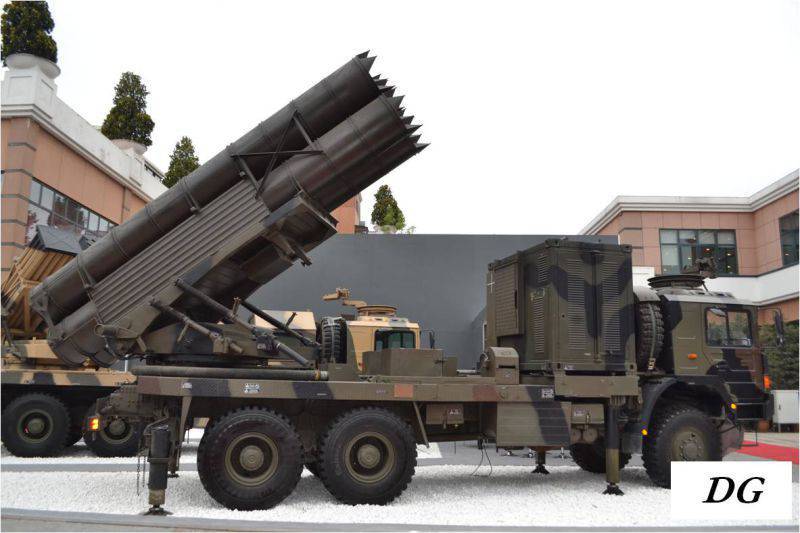
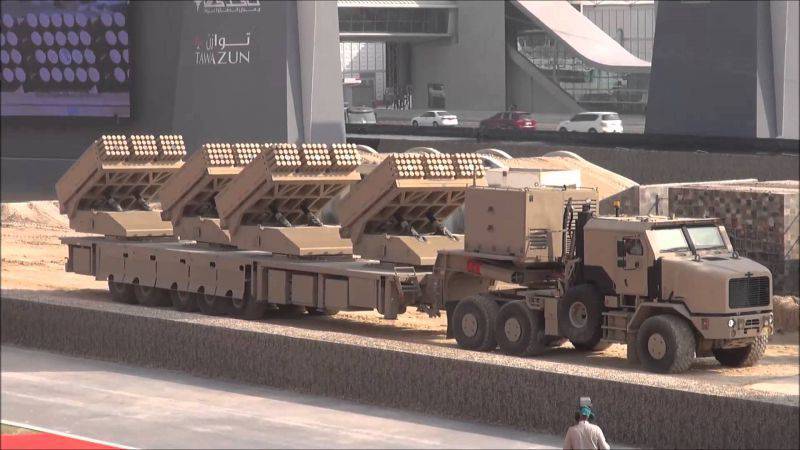
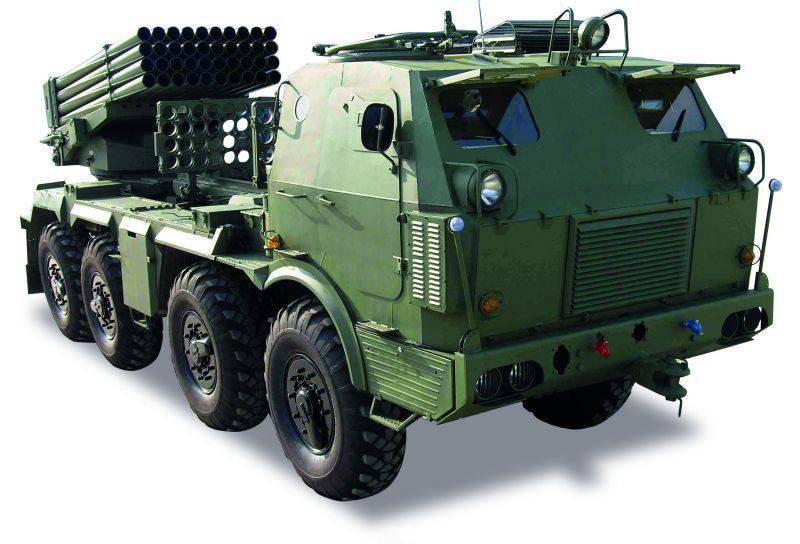
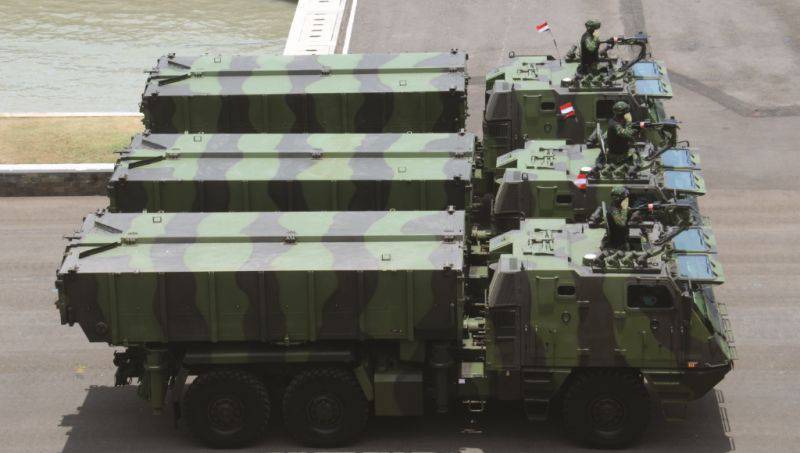
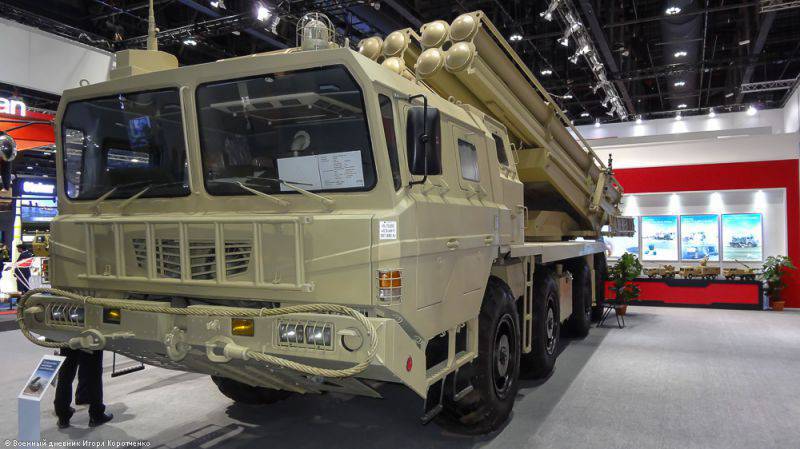
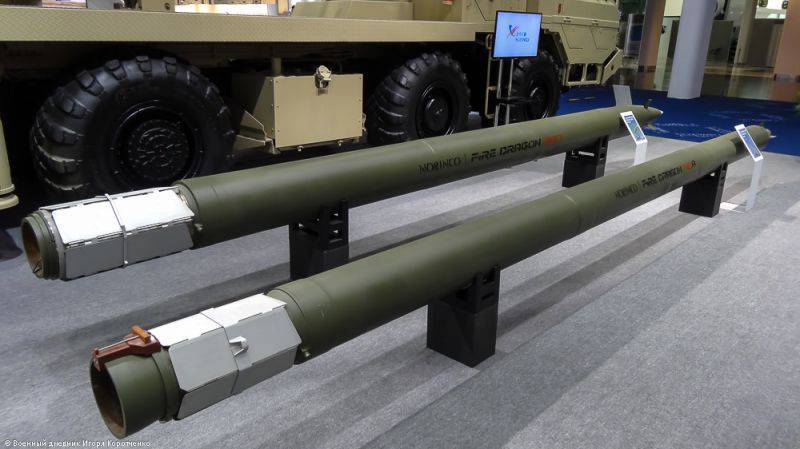
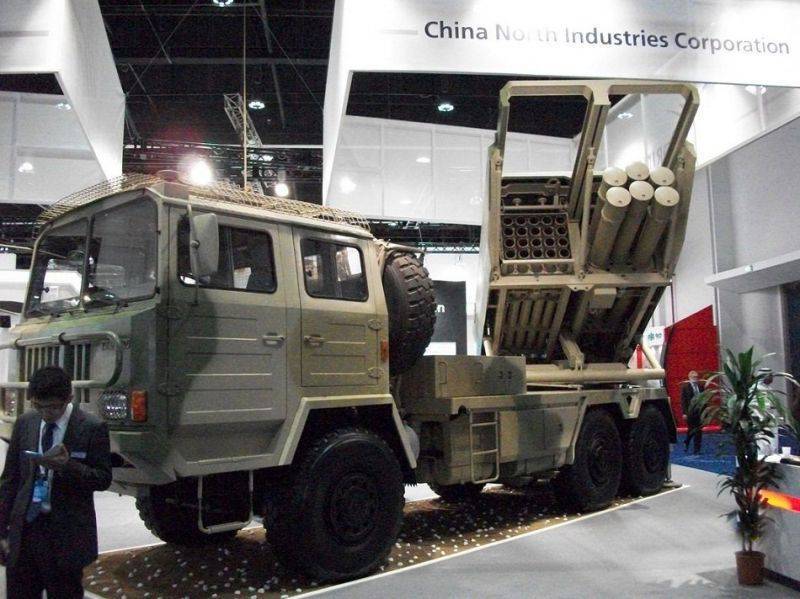
Information